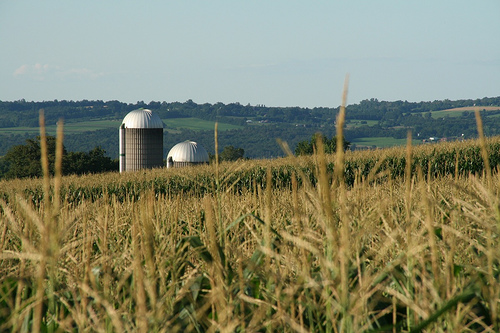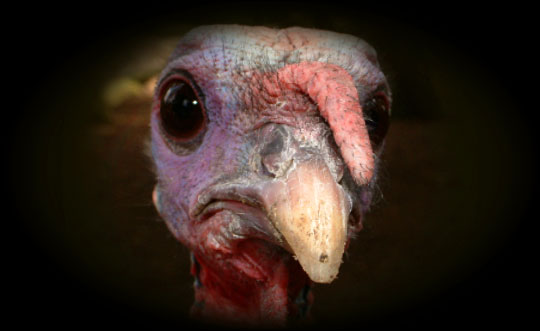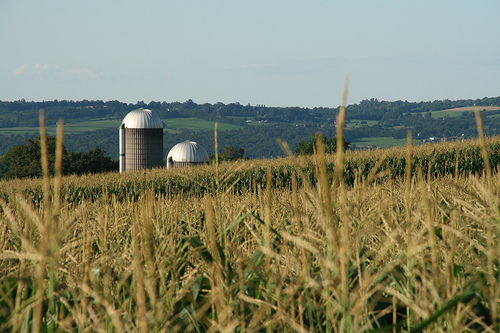 Photo: Jim
Photo: Jim
When the 2008 Farm Bill passed, Michael Pollan took to the pages of Grist to ask, “why so little change on the key issue? Why didn’t we get a food bill, rather than another farm bill?” Then he tasked food reformers to prepare for the next one, when change might really happen:
It’s not enough to engage the public, important as that is; we also have to get much smarter about both policy and politics, and craft some attractive proposals that will divide the farm block as well as move us to a healthier and more sustainable food system — economically sustainable for farmers and farm workers and environmentally sustainable.
Since then, food reformers — who have begun to drive the media conversation as well as force agribusiness to engage in opposition research new marketing campaigns — have had reason to hope they might control the debate over the next Farm Bill.
But the recession plus the Republican wave of 2010 smashed those hopes. The ensuing GOP governing philosophy of corporate welfare combined with budget-cutting mania led Tom Philpott to opine earlier this year that the “Budget fight threatens to turn Farm Bill into Industrial Ag Bill.” Though the Farm Bill only comes up every five years, Congress appropriates money on an annual basis; the fight over this year’s spending is just now coming to an end.
In this latest agriculture budget battle, the GOP targeted conservation programs, which serve as rare counterweights to a system designed to encourage excessive production of commodities like corn, soy and cotton. Organic transition, rural development programs, and research funding also took considerable hits. Without these elements of the bill, practically all that remains are policies that encourage overproduction of a small set of commodities — namely, the programs most associated with agribusiness.
And there remains enormous pressure to find even more “savings” in agricultural subsidies. Unlike in the past, when talk of cutting subsidies ended up as just that, Congress is currently full of conservative “true believers” in austerity, who don’t seem concerned about voting against their constituents’ interests, even in farm states. Significant reductions to traditional commodity programs are a very real possibility. Of course, in bargaining situations such as this one, the most influential insiders do all they can to protect their interests at the expense of less powerful players. In the case of farm subsidies that could mean protection for commodities producers and reductions in the programs that support sustainable agriculture.
This reality has encouraged a hands-off approach to this year’s Farm Bill from one major potential force for reform: AGree, a recently formed coalition that includes the Gates Foundation, the Packard Foundation, the Ford Foundation, the Robert Wood Johnson Foundation, and the McKnight Foundation. The group hopes to “break the stalemate” on agricultural policy in this country — just not this year.
AGree’s co-chair and former Clinton administration USDA Secretary Dan Glickman said in an interview that when the group does get more fully involved, it will focus on a “three-legged stool” of agricultural policy: Risk management, research, and conservation. We’ll just have to wait until 2017 to see if it’s a stool we can sit on.
One source of new ideas for this year’s Farm Bill is the National Farmers Union, the moderate counterpart to the more “notorious” American Farm Bureau (the AFB is the group that has called for war with food reformers and is the most strident in its climate denial).
The NFU just released a study that explains how the use of what they call “farmer-owned reserves” would have have saved over $56 billion in taxpayer money over the last 12 years. The very complex idea goes something like this: farmers would get paid by the government to put some of their harvest in reserve to use as a buffer for both high and low prices. The reserve wouldn’t be government-owned or controlled, and market forces would drive the decision to stock-pile it or sell it. What’s interesting is that such a reserve reduces both over-production of commodities and price spikes such as the one we’re experiencing now. And it wouldn’t interfere with farmers’ ability to sell abroad, which — for better or for worse — is a major source of income for commodity growers. Their proposal could represent a small but significant improvement in our subsidy system.
We’re clearly not looking at Michael Pollan’s vision for the Farm Bill. But these might be the kinds of positive changes we can expect this time around. And if food reformers want to show themselves to be the sophisticated players in food and ag policy they strive to be, it might require pushing for ideas like these, now that the Whole Enchilada is off the table.




